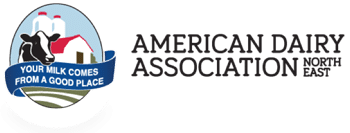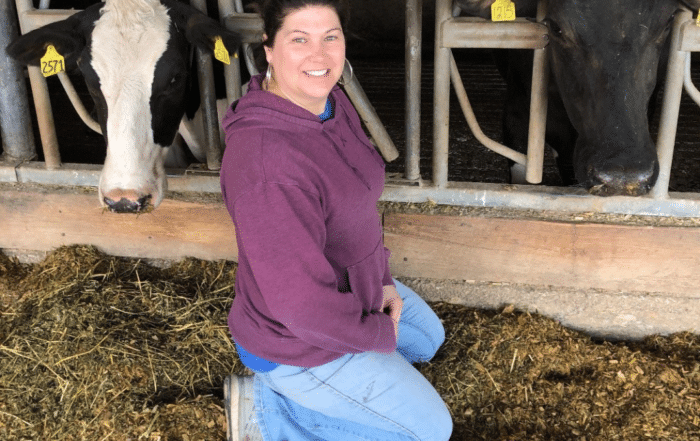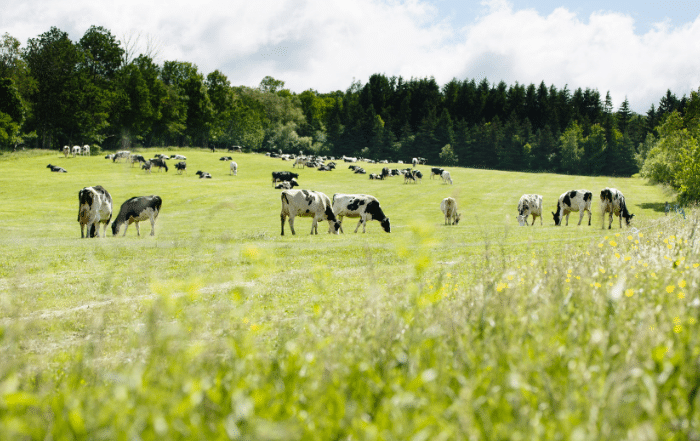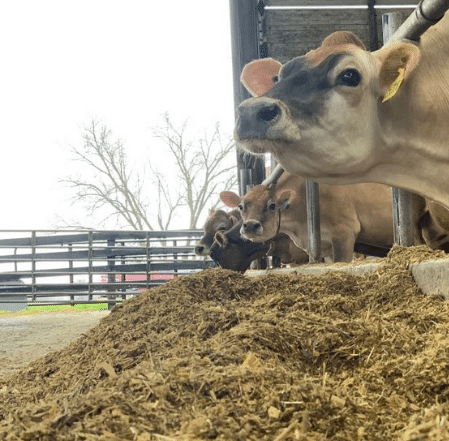Storage Guidelines to Maintain Quality, Freshness and Safety
Proper storage and handling of food products is a necessity that will help maintain the quality, freshness and safety of the items you purchase and provide for your family.
Dairy foods are perishable and should always be kept cold. Here are some general guidelines for storage from date of purchase.
Butter
Refrigerator (at or below 40ºF)
1-2 months
Freezer (at or below 0ºF)
6 – 9 months
Cheese, hard (ex. Swiss or cheddar)
Refrigerator (at or below 40ºF)
6 months, or 3 – 4 weeks if refrigerated after opening
Freezer (at or below 0ºF)
6 months
Cheese, soft (ex. brie)
Refrigerator (at or below 40ºF)
1 – 2 weeks
Freezer (at or below 0ºF)
6 months
Cheese, shredded (ex. cheddar, mozzarella)
Refrigerator (at or below 40ºF)
1 month
Freezer (at or below 0ºF)
3 – 4 months
Cheese, processed slices
Refrigerator (at or below 40ºF)
3 – 4 weeks
Freezer (at or below 0ºF)
Not recommended
Cottage cheese, ricotta
Refrigerator (at or below 40ºF)
2 weeks, or 1 week if refrigerated after opening
Freezer (at or below 0ºF)
Not recommended
Cream cheese
Refrigerator (at or below 40ºF)
2 weeks
Freezer (at or below 0ºF)
Not recommended
Cream, heavy
Refrigerator (at or below 40ºF)
10 Days
Freezer (at or below 0ºF)
3 – 4 months
Kefir, fermented milk
Refrigerator (at or below 40ºF)
1 week, or 1-2 days if refrigerated after opening
Freezer (at or below 0ºF)
Not recommended
Milk, plain or flavored
Refrigerator (at or below 40ºF)
Package use-by date
Freezer (at or below 0ºF)
3 months
Milk, lactose-free
Refrigerator (at or below 40ºF)
1 week
Freezer (at or below 0ºF)
Not recommended
Sour cream
Refrigerator (at or below 40ºF)
Package use-by date
Freezer (at or below 0ºF)
Not recommended
Yogurt
Refrigerator (at or below 40ºF)
1 – 2 weeks
Freezer (at or below 0ºF)
1-2 months
Half & Half
Refrigerator (at or below 40ºF)
3-4 days
Freezer (at or below 0ºF)
4 months
Source: U.S. Department of Agriculture FoodKeeper App
Because of the way it is processed, shelf-stable (UHT – ultra high temperature) milk can be stored at room temperature; however, once opened, it must be refrigerated.
Decoding Dates
The phrases and dates on food packaging can be confusing. But they deliver information that’s useful when you’re grocery shopping and when you’re deciding whether to keep or toss perishable foods. Here are the most common phrases seen on food packages, and how they are defined by the USDA.
Dairy’s Sell By Dates
Provides guidance to the store about how long to display the product for sale. While this date allows for a reasonable amount of time for you to use the food at home, you should buy the product before this date passes.
Dairy’s Best If Used By or Before Dates
Recommended for best flavor or quality. It is not a purchase or safety date.
Dairy’s Use By Dates
The last date recommended for the use of the product while at peak quality; determined by the manufacturer.
Always choose the latest dates available on the shelf to give yourself enough time to use the product at its peak of quality and safety. If you’re not sure that the dairy product is safe to eat, it’s best to discard it.
Is it Safe to Drink Raw Milk ?
Pasteurization is the process of heating raw milk to at least 161 degrees F for 15 seconds to remove milk-borne pathogens. This simple process destroys harmful bacteria while maintaining milk’s quality, taste, and nutritional value. While some people tout raw milk as a better choice, it’s not recommended from a safety standpoint, especially for infants and young children, older adults, pregnant women, and people with a weakened immune system. In fact, healthy people of any age can become very sick if they consume raw milk that contains bacteria.
What about Food Safety on the Farm?
Many steps go into ensuring that the milk and dairy foods you love deliver the flavor, texture, and unique nutrition profile you expect. From cow care to the use of sterilized equipment to hold and efficiently transport fresh milk, to numerous food safety, quality, and sanitation checks along the way, milk and dairy foods are among the most highly regulated foods in the supermarket.
Once you bring them home, it’s your job to exercise proper storage and handling practices to prevent food waste, an unpleasant eating experience, or even sickness.






